Sports Illustrated 1956 – 1963
Editorial and Commercial 1964 – 1991
Early in the 1950s a correspondent for LIFE magazine received an assignment to cover a story with a new free-lance photographer named John G. Zimmerman. “How will I know which photographer is Zimmerman?” asked the correspondent. ”Just look for the guy who is screwing his equipment back together,” answered his editor. The anecdote captures Zimmerman’s life-long fascination with camera technology. Making pictures for magazines such as LIFE, Sports Illustrated, Saturday Evening Post and Time as well as commercial work for over four decades, Zimmerman consistently created photographs known for their innovation and artistry.
Growing up in Torrance, California, Zimmerman joined a photographic club in junior high school and spent afternoons developing film with friends in their mothers’ kitchens. Zimmerman’s father, John L. Zimmerman, was a gaffer at a major film studio and further encouraged his son by building a darkroom at home. John G. credited early exposure to his father’s craft in part for his ability to engineer cameras and lighting to his own designs.
Zimmerman’s formal training began with a three-year photography course at John C. Freemont High School in Los Angeles. Taught by Hollywood cinematographer Clarence A. Bach, the intensive program was famous for launching the careers of no less than six LIFE photographers. Bach handed out photo assignments as if he were the editor of a daily newspaper; his students had to be prepared to cover any assignment whether it be a sporting event or an entertainer at a local nightclub. The teenage Zimmerman photographed Bing Crosby and Nat King Cole and made up 11 x 14 prints in his lab, selling them to the singers for $1.50 each.
Zimmerman often cited his early training under Bach as a significant influence in his career. Bach encouraged his graduates to provide guidance to younger photographers just starting out, something that Zimmerman practiced throughout his career and which distinguished him in the competitive world of professional photography. His relationships with fellow Bach graduates, including Life photographers Mark Kauffman and John Dominis, were life-long.
Upon graduating high school, Zimmerman enlisted as a Navy photographer and served briefly. With the help of Bach’s informal alumni network, Zimmerman landed his first job as a staff photographer at the Time bureau in Washington D.C. His first assignment as a Time staffer in 1950 demonstrated a combination of quick thinking and sheer luck. Leaving the White House just as Puerto Rican nationalists attempted to assassinate President Truman, Zimmerman was among the first photographers on the scene. His photos of the assault were featured in both Time and LIFE.
From 1952-1955, Zimmerman photographed a series of assignments for Ebony depicting the lives of African Americans in the Midwest and the Jim Crow south. These photographs are a lesser-known yet notable part of Zimmerman’s early work. The subject matter ranges from the first all black supermarket in Detroit, boxing legend Joe Louis, to sharecropper Matt Ingram’s quest for justice.
While the Ebony assignments are straight-forward photojournalism, Zimmerman also created pictures during this time that pushed the boundaries of photojournalism. In 1955, LIFE assigned him to document Detroit’s old Mariners’ Church being moved to a new location across town. The move took four weeks to complete yet Zimmerman created a photo that gives the effect of the church hurtling through downtown Detroit at top speed. The use of technology to show on film what the naked eye could never see became a hallmark of Zimmerman’s mature work.
Zimmerman’s innovative approach caught the eye of Gerald Astor, Picture Editor of the newly formed Sports Illustrated. Astor hired him in 1956 as one of the magazine’s first staff photographers. While at the magazine, Zimmerman created many memorable images such as Bednarik Knocks Out Gifford (1960) that have become icons of sports photography. But it was his unique camera placements and electronic lighting techniques, combined with his pioneering use of remote controlled cameras, motor-driven camera sequences and double shutter designs that revolutionized how sports were viewed.
To bring readers up close to basketball, for example, Zimmerman put remote-controlled cameras on the glass backboards. Sports Illustrated photographer Walter Iooss Jr. recalled seeing Zimmerman’s 1961 photographs of basketball star Wilt Chamberlain: “it was the first time a photojournalist had placed a camera above the rim of a basket. It was like looking at something from another planet.” Many of Zimmerman’s techniques are commonplace today but were unheard of when he first used them.
Zimmerman travelled incessantly as a staffer for Sports Illustrated. It was on one of his many flights, an 83 minute connection between New York and Philadelphia, that he met his future wife, a dark-haired TWA stewardess named Delores Miter. They were married in 1958 and had three children. During those years, Delores became her husband’s business partner and eventually assumed management of all the company finances, leaving Zimmerman free to focus on his photographic work.
Editorial and Commercial Work, 1964-1991
Zimmerman left Sports Illustrated in 1963 to work for the Saturday Evening Post, a move motivated primarily by a desire to widen his knowledge of the craft. Though short-lived, his work for the Post (1963-65) covered the gamut of American popular culture—from the Beatles’ appearance on Ed Sullivan in 1964 to the latest in fashion, entertainment, politics, business and science.
After moving to Los Angeles with his family in 1972, Zimmerman broke new ground by taking on commercial work, using his technical expertise to illustrate complex concepts for advertising clients such as Ford, Exxon, G.E. and Coca Cola among others. He also employed his elaborate lighting setups to become a sought-after architectural photographer for publications such as American Home and Time Life Books. He continued to cover sports throughout his career, photographing ten Olympic Games and over one hundred Sports Illustrated covers, including seven of the ever-popular swimsuit issues.
“John was a master of lighting, whether the subject was a 20,000 seat arena or Christie Brinkley on a beach,” recalled photographer Neil Leifer in a 2002 tribute. “He was at ease shooting in 35mm or large format, as adept with wide-angle lenses as he was with telephotos. I put him up there with Avedon, Leibowitz, Penn and Adams.”

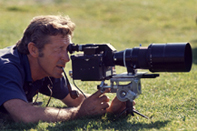 With Hulcher, 1979
With Hulcher, 1979
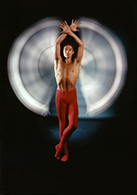 Dance Sonata, 1966
Dance Sonata, 1966
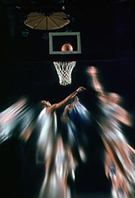 Basketball Blur, 1958
Basketball Blur, 1958
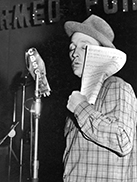 Bing Crosby, 1944
Bing Crosby, 1944
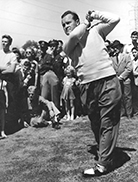 Bob Hope, 1944
Bob Hope, 1944
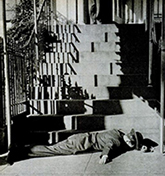 Wounded Assassin, 1950
Wounded Assassin, 1950
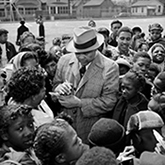 Joe Louis, 1954
Joe Louis, 1954
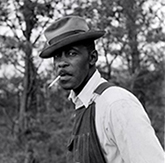 Matt ingram, 1953
Matt ingram, 1953
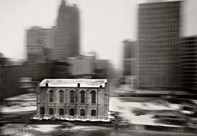 Mariners' Church, 1955
Mariners' Church, 1955
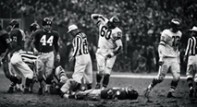 Bednarik Knocks Out Gifford, 1960
Bednarik Knocks Out Gifford, 1960
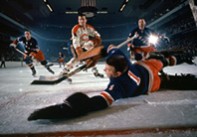 Rangers vs Canadiens, 1962
Rangers vs Canadiens, 1962
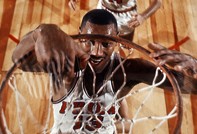 Wilt Chamberlain, 1961
Wilt Chamberlain, 1961
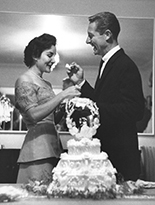 Delores & John, 1958
Delores & John, 1958
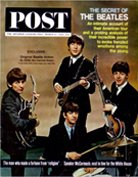 Beatles, 1964
Beatles, 1964
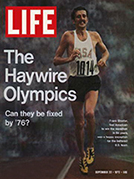 Frank Shorter, 1972
Frank Shorter, 1972
 Christie Brinkley, 1981
Christie Brinkley, 1981